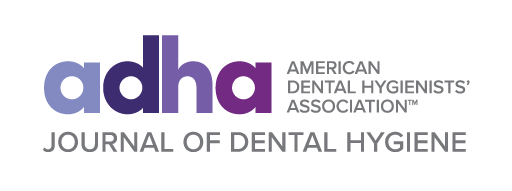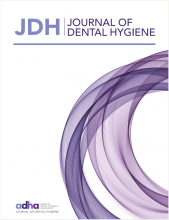
John Maxwell is quoted as saying “Success is due to our stretching to the challenges of life. Failure comes when we shrink from them.” As we celebrate National Children’s Dental Health Month, we must celebrate the advances we have seen in pediatric oral health and acknowledge the challenges. As Maxwell notes, it is imperative we rise to the occasion to address these challenges as professionals who make strong evidence-based decisions and focus on health equity. Ensuring children have good oral health ensures that they are free of pain, able to eat well, and concentrate in school.
There are growing opportunities in the availability of school-based oral health programs that offer proven prevention strategies such as dental sealants, fluoride varnish and minimally invasive interventions to improve the health of kids.1
School-based sealant programs have also been shown to reduce dental disease in populations that lack access to regular and ongoing dental care. A focus on expansion of these programs could improve pediatric oral health across populations lacking access to care.2 While advancements in this area continue, we still see a lack of consistent use of dental sealants across all practice settings.2,3 Additionally, efforts to expand medical-dental integration, bringing needed care to where patients are already, are expanding. More than 112 million Americans visit their physician annually but do not see a dental provider.4 In Wisconsin, dental hygienists are being integrated into medical care teams to provide preventive oral health services at well-child visits beginning as early as 6 months of age.5
Far too many children, particularly those facing economic challenges or persons of color have poorer oral health outcomes than their white, more affluent peers.4 Additionally children continue to receive care in emergency departments and operating rooms which is more costly and an undesirable location for dental care.1 Communities that have used evidence-based approaches such as dental therapy have seen decreases in these types of hospital-based emergency and surgical cases; however, politics and misinformation on the safety and effectiveness of dental therapy has prevented strategies such as these from advancing. Opponents of dental therapy often falsely claim a lack of education or risk of safety to the public that are not supported in the literature. Ensuring the dental community understands the current evidence is critical to improving access and understanding these proven workforce models.6 Removing barriers to care will continue to be a critical step if we want to see improvements in access to care and improved pediatric oral health outcomes.
Direct access is defined by the American Dental Hygienists’ Association as the ability of a dental hygienist to initiate treatment based on their assessment of a patient’s needs without the specific authorization of a dentist, treat the patient without the presence of a dentist, and maintain a provider-patient relationship. The settings where direct access can occur varies widely state by state, however this should not be the case. The settings or the state where a dental hygienist chooses to practice should not change the practitioner’s ability to provide high quality care. Unfortunately, state regulations often impose unnecessary limits on this. The advancement of direct access to critical dental hygiene care continues to grow across the country because of the hard work of the American Dental Hygienists’ Association. Direct access has the potential to allow dental hygienists to provide their full scope of practice in places like schools, medical offices, nursing homes and childcare centers without the authorization and direct oversight of a dentist. Efforts to expand dental therapy and direct access, both of which have proven track records of improving oral health without risk to the public, should be promoted across the dental community.6 Unfortunately, the American Dental Association has been focused on resisting these evidence-based models and in exchange are proposing the creation of new provider types that are not based in evidence, are lacking in education standards and put the public at risk.
The rise of misinformation available to families online is also alarming and has resulted in more communities ending their safe, effective and proven community water fluoridation programs. Community water fluoridation has over 80 years of evidence to support its safety and efficacy for reducing caries. Embracing and implementing programs and practices with strong evidence will be critical if we want to address the challenges we will continue to see in the coming years. We should be focused on using proven efforts to improve access to dental care and overall health. One example of this is caring for pregnant patients. Practice has not kept up with the evidence released as part of the national consensus statement on oral health for pregnant women in 2012.7 Ensuring that women during pregnancy receive treatment throughout their term – including radiographs, periodontal therapy and restorative care – is also critical to the oral health of their newborn baby. As health care professionals, it is our responsibility that we use scientifically accurate information regardless of what practice setting we provide care in. I would like to challenge anyone with a passion for improving oral health to embrace these evidence-based and innovative approaches to improving oral health across all sectors of the oral health landscape.
Imagine a world where children would receive oral health prevention services as readily as they do well-child visits. Allowing children to see dental hygienists at an early age would prevent disease and save money. Now imagine that rather than waiting until a child has a mouth full of decay and needs to be taken to the operating room to be put under general anesthesia, that we were able to use minimally invasive treatments because of the early interventions previously described. Think of the experience from the lens of a child, brushing on varnish, silver diamine fluoride or a glass-ionomer cement as compared to surgery in the hospital where you wake up in pain and in an unfamiliar place. We have dental care delivery models that work and are based on evidence. We must not continue to “shrink” as Maxwell said but rather “stretch to the challenge” and embrace these approaches.
Let’s take the words “that’s not what I learned in school” and “in my opinion” out of our vocabularies and do what is right for the oral health of kids. Let’s embrace science, think critically about research and stop resisting what science has shown to work. Let’s challenge one another to stick to the evidence and find ways to use proven methods to increase access for children to ensure they are healthy, safe and able to thrive.
- Copyright © 2025 The American Dental Hygienists’ Association
This article is open access and may not be copied, distributed or modified without written permission from the American Dental Hygienists’ Association.








